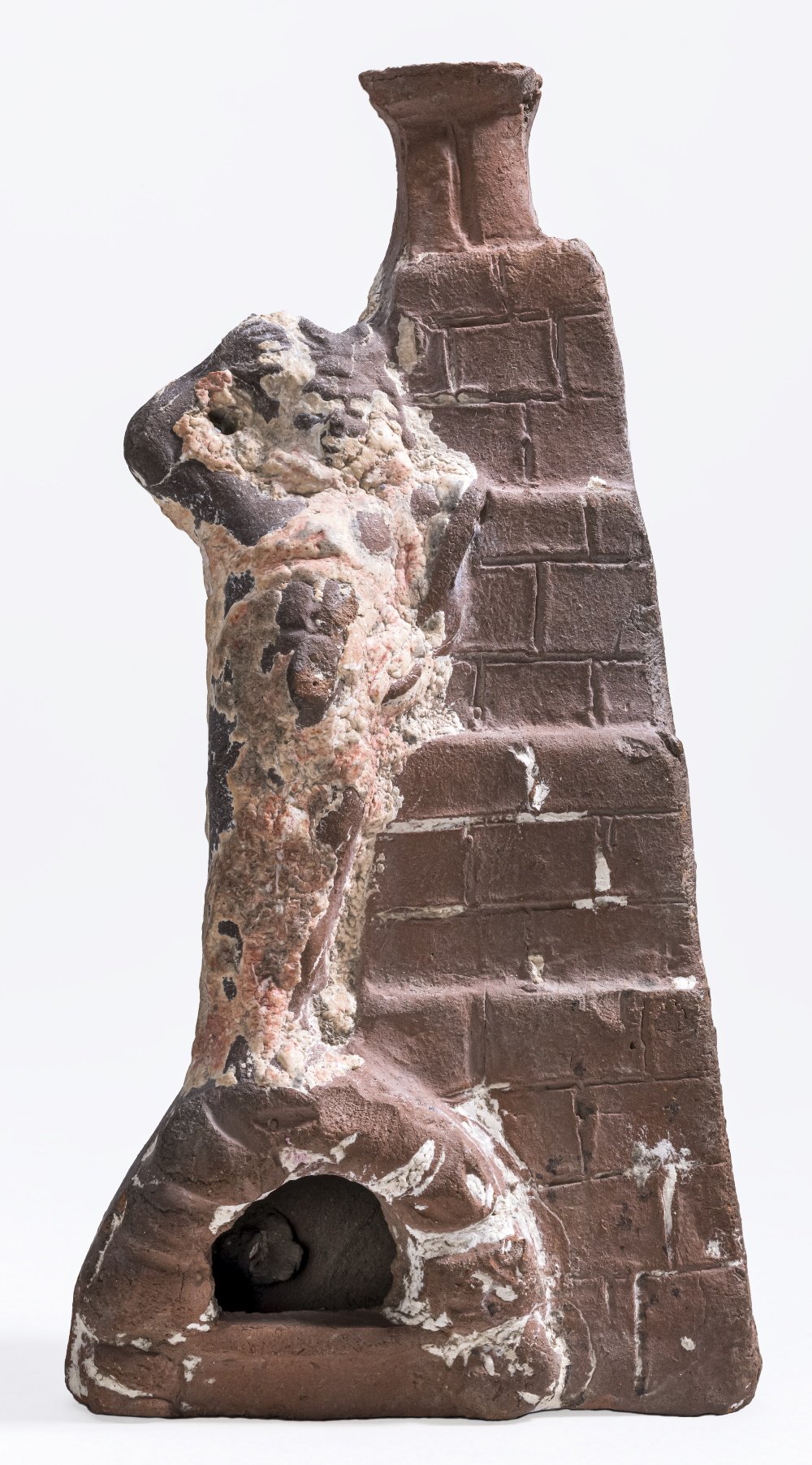About 1.5 km off the harbour entrance of Alexandria, which was inhabited by 500,000 people in the 1st century BC, stood the lighthouse, which in antiquity was considered one of the wonders of the world. Between 290 and 279 BC, the approximately 113-metre-high navigation mark was built on the island of Pharos according to plans by the architect Sostratos of Knidos. The name of the island or the location gave its name to beacons of this kind. Even today, the term 'Faro' (lighthouse) in the Romance languages is derived from this former wonder of the world. Initially planned as an unlit daylight beacon, the Pharos was lit by a large brushwood fire in the 1st century BC. The Lighthouse of Alexandria did its duty until it collapsed in an earthquake in 1326.
The overall composition of the statuette is reminiscent of the lighthouse with its characteristic stepped structure. But it embodies much more. The figure leaning against the tower on the left and standing on an oval base is the representation of the god Pan, who was worshipped in Alexandria in his own cave-like sanctuary, the Paneion. The Greeks living in Egypt identified the Egyptian god Min with Pan. Min was considered the patron god of caravans travelling through the desert and trading. Under King Ptolemy II, a sanctuary was built to the Greek Pan in the trading metropolis of Alexandria in the 3rd century BC. This terracotta was probably donated as a votive offering to the Alexandrian Pan. (AVS)
de









